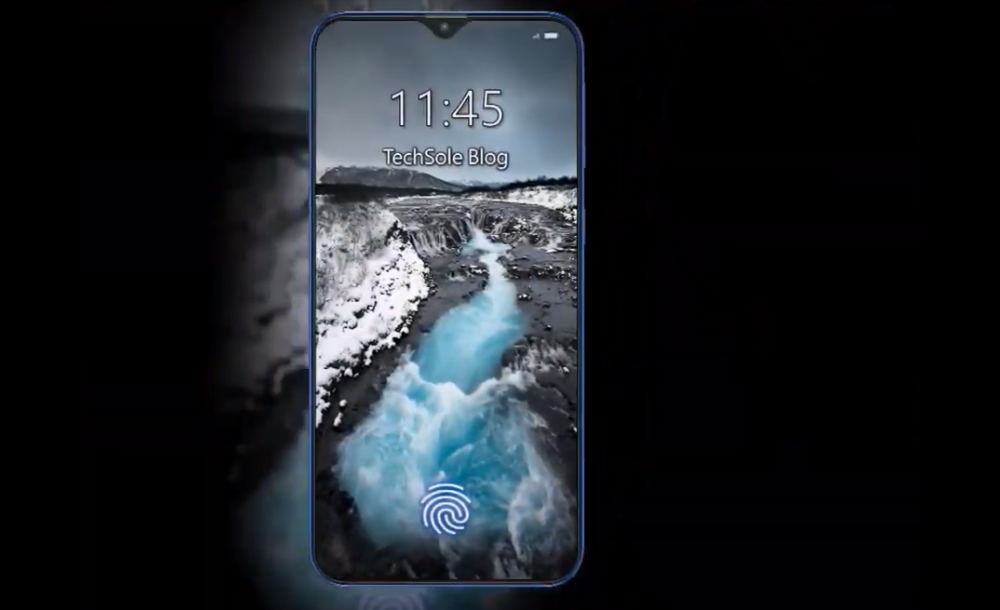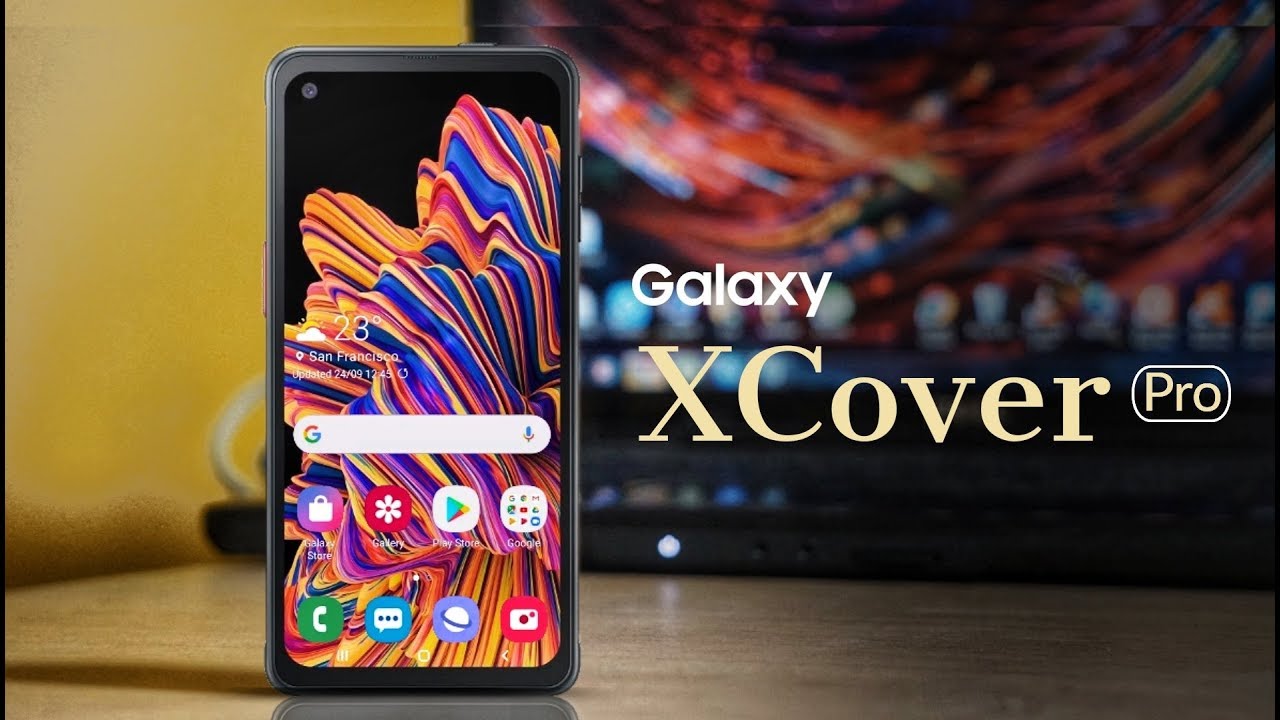New sub-flagship: Samsung Galaxy A50 - pros and cons

While Huawei conquers the flagship smartphone market with the announcement of a new high-budget line P30Samsung is trying to keep up with them and also announces the release of its flagship.
And although the Samsung Galaxy A50 has not yet been released, many details and technical characteristics of the upcoming novelty are already known. Judging by them, the smartphone, although it claims to be the flagship, but according to the characteristics known at the moment, barely reaches it. Therefore, it should be perceived rather as a decent model from the middle class.
Its official release is scheduled for the first quarter of 2019, and until then we will try to analyze in detail what is already known about the Galaxy A50.
Design
This time, we will not have to judge the new device only by the published renders posted by Trending Leaks insiders. This time, photos of the smartphone body have appeared on the network, which are undoubtedly more convincing than ordinary renders.
It will be a device with a screen with a diagonal of 6 inches and a frameless display.

At first, the renders as a selfie camera had a small sensor built right into the active screen, but later it became known that the phone would still have a V-shaped teardrop-shaped notch in the upper part, on which the selfie camera would be located, and the backlight for it and a conversational speaker. In addition, it will also house a light sensor.
However, the triple rear camera shown in the renders really remained. In addition to her, everything is pretty standard: two speakers at the bottom, a 3.5-inch headphone jack and USB TypeC for charging. The lock button and volume rocker are traditionally located on the side.
The fingerprint scanner in the first developments was supposed to be placed on the back of the lid, but now it is assumed that it will be integrated into the screen.
According to a report from Trending Leaks, it is known that the device will be released in three colors: Blue-blue gradient, pale pink gradient, smoothly turning into red and classic black.
Display
The new model from Samsung will receive a capacitive Super Amoled screen, the diagonal of which is 6 inches with the popular 1080x2340 resolution, which is classified as FullHD + and has already become standard for new generation frameless smartphones. The number of pixels per inch of the screen will be approximately 430.
The display will display the usual 16 million colors for screens of this type, so the color rendering should be at a very high level.
The screen will also support the software Always on display feature, which displays all relevant information such as time, calendar, call list, battery level on the off display. This saves battery life well.
It is also rumored that the screen will be made using the new technology Samsung V or Samsung U, there is no difference between them, these are just different names of the same brand.
A screen made using this technology should bend smoothly at an angle of 90about without any effect on the display. To protect the screen, not Gorilla Glass will be used, but a special plastic polymer.
Nevertheless, this is very controversial information, and not all sources confirm it. True or not, it will be possible to find out only after the release.

Specifications
Here we will indicate the currently known list of technical characteristics, and a little below we will consider them in more detail. Please note that as the release date approaches, the list may change
| Main characteristics | Samsung Galaxy A50 |
|---|---|
| Net: | GSM / HSPA / LTE |
| Platform: | Android 9.0 (Pie) |
| Display: | Super AMOLED, capacitive sensor, 16M colors; 6.0 inches; 1080 x 2340 pixels, 19.5: 9 aspect ratio (~ 430 ppi density) |
| Camera: | 1st module 24 MP, PDAF; 2nd module 10 MP; 3rd TOF camera module |
| Front-camera: | 24 MP, HDR |
| CPU: | Exynos 9610 Octa (4x Cortex A73 2.1GHz; 4x Cortex A53 1.6GHz) |
| Graphics chip: | Mali-G72 |
| RAM: | 4/8 GB |
| Inner memory: | 64 / 128GB |
| Memory card: | Up to 512 GB |
| Navigation: | A-GPS, GLONASS, BDS |
| WI-FI: | Wi-Fi 802.11 a / b / g / n / ac, dual-band, WiFi Direct, hotspot |
| Bluetooth: | 5.0, A2DP, LE |
| Sensors and scanners | Fingerprint scanner (integrated in the screen), accelerometer, gyroscope, proximity sensor, compass. |
| Battery: | non-removable Li-Po battery 4000 mAh |
| Dimensions: | Unknown |
| Weight: | Unknown |
| NFC system | there is |
CPU
The new smartphone from Samsung will run on the Exynos 9610 processor, designed to complement the lineup of flagship processors, in which the well-proven Exynos 9810, used in the Samsung Galaxy S9 and Galaxy S9 +, has already firmly settled.
This is an eight-core system, consisting of four high-performance Cortex A73 cores with a frequency of 2.3 GHz, performing basic computing work and four Cortex-A53 cores with a frequency of 1.6 GHz, which take on tasks that do not require significant computing power.
A system with this principle of dividing performance across cores is also called BIGLITTLE.
This single-chip system is built on a 10nm process called FinFET, which in the future will provide it with less heat and less energy consumption.
However, the main advantage of this chip is the neural image processing system and machine learning. Using these modules is good for the quality of images and videos. It allows you to process night shots, correcting dark areas and brightening images.
Thanks to this chip, the blur effect has been successfully implemented with only one camera module in the Pixel smartphone line.
The face recognition system has also improved greatly. The device now recognizes faces, even if they are partially covered by hair or other accessories.
For a phone that, although at a stretch, can be considered a flagship, in which the developer has focused on the quality of shooting, besides having 3 camera modules, this is an excellent solution that will reveal the capabilities of the processor.
Responsible for the graphics is the Mali-G71 graphics chip, previously used in the Kirin 960 and Exynos 8895. No major changes in the graphics component are expected, although in the above processors it showed good results and coped with most games without problems, and supported work with VR.


Memory
Based on the available information, the phone will come in two versions:
- 128 GB of internal memory and 6 GB of RAM;
- 64 GB internal and 4 GB operational.
As you can see, the latest smartphones no longer have less than 4 GB of RAM, which undoubtedly has a positive effect on their performance.
To increase the amount of internal memory, there will be an SD card slot that supports media up to 512 GB.
Camera

As mentioned above, the rear camera will consist of three modules:
- The main sensor will receive a resolution of 24 MP and PDAF phase detection autofocus. This technology is the brainchild of Samsung and has been successfully used in the phones of this company, starting with Samsung Galaxy S. It is a tracing copy from SLR cameras and provides high accuracy, which is especially noticeable in low light.
- The second sensor will have a resolution of 8 MP. Most likely, it will be used for the correct operation of phase detection autofocus, since it needs an additional sensor that would set the processor the necessary settings for the picture.
- The third sensor is rumored to be dedicated to the TOF camera. Although this technology is not new, it has only recently come into use in smartphones.The acronym TOF stands for Time of flight camera or time-of-flight camera. The sensor in this camera is capable of emitting light and recording the speed of its reflection from the object. The camera consists of many miniature sensors that capture every point captured by the light beam. This allows you to create 3D models of captured objects and work with them through special programs.
FaceID also uses a low-resolution TOF camera to recognize a user's unique facial features.
Thanks to the Exynos 9610 chip, the phone will be able to record FullHD video at 1920 x 1080 pixels at 480 frames per second, which essentially allows you to shoot in Slo-mo mode.
In addition, the camera settings will include panoramic shooting and HDR.
Selfie camera
At the moment, little is known about the front camera. We can only say that it will have an optical sensor with a resolution of 24 megapixels and support HDR mode.
Also, through it, you can shoot video in FullHD at 30 FPS.
operating system
It is known that the phone will run on Android 9.0 Pie system. It differs from Oreo in that it fixes many bugs, slightly redesigned the interface and improved battery saving services.
We analyzed it in more detail in the review on Huawei P30.
Battery
This device will operate on a 4000 mAh Li-polymer battery, which is traditionally made non-removable. It is difficult to predict how long the battery will last, but it is safe to assume that it will provide a day of work.
This will also be facilitated by the battery saving services implemented in the Android 9.0 Pie operating system.
Advantages and disadvantages
Here we will try to summarize the supposed strengths and weaknesses of the phone.
- Camera. The triple sensor with phase detection autofocus will allow you to take clear and high-quality photos even in low light conditions. This is greatly facilitated by a processor with a neural processing unit for automatic photo correction and shooting in slo-mo mode. In addition to this, the 3rd TOF camera sensor will allow you to create and work with virtual models.
- Samsung V bending screen. It is not known whether this technology will be implemented in this model, but it would be interesting to see it in action.
- New operating system right out of the box.
- Beautiful design.
- The presence of the NFC system.
- Despite the fact that this processor has many advantages, the graphics system in it is relatively old, and the performance in general is approximately at the level of the sub-flagship.
Conclusion
Not to say that Samsung will release a revolutionary model, but it still has a few attractive things, such as a camera with a TOF sensor and bending glass (not exactly).
The model is positioned as a flagship model and even has all the necessary characteristics for this, however, in terms of performance, the processor may be inferior to flagship models from Huawei and Xiaomi.
The main question now is its cost, if the phone is sold at an adequate price, it will definitely be in demand, and whether this will be so or not, we will find out in May 2019.
new entries
Categories
Useful
Popular articles
-

Top rating of the best and inexpensive scooters up to 50 cubic meters in 2024
Views: 97661 -

Rating of the best materials for noise insulation for an apartment in 2024
Views: 95022 -

Rating of cheap analogues of expensive medicines for flu and colds for 2024
Views: 91751 -

The best men's running shoes in 2024
Views: 87681 -

Top ranking of the best smartwatches 2024 - price-quality
Views: 85091 -

Best Complex Vitamins in 2024
Views: 84801 -

The best dye for gray hair - 2024 top ranking
Views: 82406 -

Rating of the best wood paints for interior use in 2024
Views: 77202 -

Ranking of the best action cameras from China in 2024
Views: 75269 -

Rating of the best spinning reels in 2024
Views: 74827 -

The most effective calcium supplements for adults and children in 2024
Views: 72463 -

Top rating of the best means for male potency in 2024 with a description
Views: 68296









